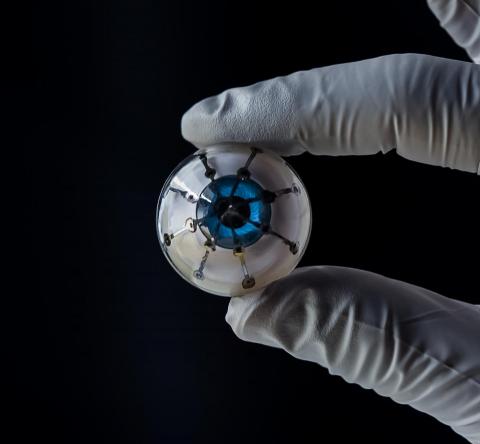The project began with a hemispherical glass dome to show how they could overcome the challenge of printing electronics on a curved surface. Using a custom-built 3D printer, they started with a base ink of silver particles. The dispensed ink stayed in place and dried uniformly instead of running down the curved surface. The researchers then used semiconducting polymer materials to print photodiodes, which convert light into electricity. The entire process took about an hour.
The most surprising part, they said, was the 25 percent efficiency in converting the light into electricity they achieved with the fully 3D-printed semiconductors. That isn't going to rival the efficiency of semiconducting devices fabricated in microfabrication facilities but this groups can print a semiconducting device on a curved surface. A few years ago they printed a "bionic ear."

Credit: University of Minnesota, McAlpine Group
Since then, they have 3D printed life-like artificial organs for surgical practice, electronic fabric that could serve as "bionic skin," electronics directly on a moving hand, and cells and scaffolds that could help people living with spinal cord injuries regain some function.
Their next steps are to create a prototype with more light receptors that are even more efficient. They'd also like to find a way to print on a soft hemispherical material that can be implanted into a real eye.






Comments